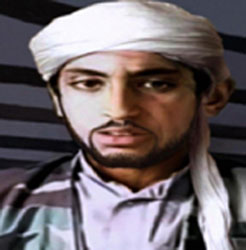You are here
Barcelona Attacks: India has Cause for Disquiet
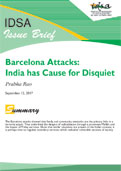 Mohammad Adnani, the erstwhile spokesman of the Islamic State in Iraq and Syria (ISIS) and Tunisian cleric Abu Muqatil, one of the main ISIS ideologues, were killed in 2014 and 2016 respectively. The reach of their ideology however has stretched across continents to influence jihadi attacks across the globe. Adnani’s call to the jihadis issued in May 2014, ‘If you can kill a disbelieving American or European — especially the spiteful and filthy French — or an Australian, or a Canadian, or any other disbeliever from the disbelievers waging war, including the citizens of the countries that entered into a coalition against the Islamic State, then rely upon Allah, and kill him in any manner or way, however it may be’, has been re-tweeted over half a million times.1 This message was initially given through the ISIS mouthpiece Dabiq, and was followed up with a quotation from the ‘Verse of the Sword’ (‘Ayat as Sayf’) calling for violence against the Kufr (unbeliever).2
Mohammad Adnani, the erstwhile spokesman of the Islamic State in Iraq and Syria (ISIS) and Tunisian cleric Abu Muqatil, one of the main ISIS ideologues, were killed in 2014 and 2016 respectively. The reach of their ideology however has stretched across continents to influence jihadi attacks across the globe. Adnani’s call to the jihadis issued in May 2014, ‘If you can kill a disbelieving American or European — especially the spiteful and filthy French — or an Australian, or a Canadian, or any other disbeliever from the disbelievers waging war, including the citizens of the countries that entered into a coalition against the Islamic State, then rely upon Allah, and kill him in any manner or way, however it may be’, has been re-tweeted over half a million times.1 This message was initially given through the ISIS mouthpiece Dabiq, and was followed up with a quotation from the ‘Verse of the Sword’ (‘Ayat as Sayf’) calling for violence against the Kufr (unbeliever).2
Adnani coupled this with the last verse that was spoken by Prophet Muhammad before he died — ‘Fear the day when you shall be returned to Allah, then each soul shall pay what it has earned’. These statements were oft repeated in sermons by Abu Muqatil, who headed the ISIS unit training suicide bombers and captive children in Mosul. His discourses in the ISIS e-magazine Dabiq3 has had considerable reach, and are a recurring theme in the magazine’s successor, the Rumiyah. In the second edition of the Rumaiyah, under the title ‘Just Terror Tactics’, the ideologue advised cadres to ‘choose a target ... like hunting prey’, adding that Kufr could be killed on beaches, sidewalks, nightclubs etc. The message was accompanied by graphic images, including of child assassins.
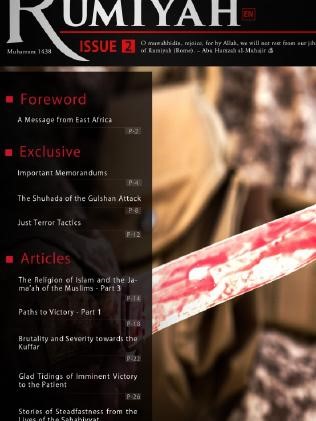
The cover of the second issue of ISIS’s Rumaiyah magazine.
Source: MEMRI
Also, there are now frequently coordinated messages by the ISIS and the al Qaeda on the issue of targeting the Kufr, an example being the message sent out by Hamza bin Laden, son of Osama bin Laden, the upcoming youth star of the group. He exhorted his followers (’the faithful’) in May 2017 thus: ‘Smash his head with a rock, or slaughter him with a knife, or run him over with your car, or throw him down from a high place, or choke him, or poison him’.4
Hamza further claimed to have a network of affiliates around the world which includes the Taliban, the al Qaida in the Indian Sub-Continent and ex-Hizbul Mujahideen, Kashmiri terrorist Zakir Musa’s new group ‘Ansar Ghazwatul Hind’.6 The ideology of the Ghazwatul Hind goes beyond separatism and calls for the primacy of Islam, and concerted action with international Islamic extremist movements. Separatist leaders and local political parties in Kashmir are claiming that Zakir Musa’s call has had little resonance in the valley; a claim which is however open to question. The Salafi/Jihadi content in Ghazwatul Hind’s messages have influenced Friday sermons and Qutbahs in the valley which are getting increasingly recidivist. They are swerving away from the traditional Sufi culture into expositions on the absolute supremacy of the Quran and the need for violent initiatives to establish the same.
Such sermons, in tandem with powerful images of carnage perpetrated by terrorists in Europe, are contributing dangerously towards radicalising the youth. A concurrent trend can be seen even with young women, when school girls and college students get involved in anti-government activities, and messages by Asiya Andrabi, the head of the ‘Dukhtaran e-Millat’, which espouses extreme Salafism, and violent Islam, has a cognisable fan following in the valley.7 This is an emerging problem not just in Kashmir, but in several vulnerable pockets of the country.
Another aspect that is finding mention in sermons in Kashmir, and other areas in India, as also in Western mosques, is the concept of ‘Gheerah’ — which can be literally translated as protective jealousy8, which requires Muslims to protect Prophet Muhammad from blasphemy and diluting his pre-eminent position. The Gheerah concept was codified by a hard-line Salafi Saudi Arabian scholar Mohammad Saalih al Munajjid, 25 years ago, and has been used as the theological justification for a score of terrorist acts, ranging from the Charlie Hebdo attack in Paris, to various instances of carnage in the name of blasphemy. Incidentally Munajjid was also responsible for advising Muslims not to befriend (Awliya) or have any business relations with the Kufr, as this was specifically forbidden by Allah.9 This perception is often repeated in Islamic texts in Saudi Arabia/Pakistan and unfortunately in the main Tanzeems of India.
The Barcelona attack on August 17, 2017, used the above backdrop for ostensible theological legitimacy. Though similar in modus operandi to the attacks in Nice (July 14, 2016 during Bastille Day celebrations), Berlin (December 19, 2016, in a popular Christmas fair), and Westminster (March 22, 2017) near the British Parliament, the Barcelona attack has discernible, important differences. The intention to create panic by mowing vehicles through popular promenades, as directed by the ISIS, was indeed a common thread. However, while the earlier attacks were more in the nature of ‘lone wolf’ initiatives, the Barcelona attack was conducted by a twelve member cell, and bears considerable resemblance to the Paris attacks (Charlie Hebdo, January 7, 2015; Paris, November 13, 2015), and Brussels (March 22, 2016). All these attacks had been meticulously planned through a network of brothers, close friends from their areas of residence, and most importantly, motivated by the local Mullah.
The Kouachi brothers who spearheaded the Charlie Hebdo attack had been influenced by Abu Hamza, a preacher in the Finsbury Mosque, United Kingdom, who had radicalised many jihadis to join the Al Qaeda in Iraq. Similarly, the perpetrators of the attacks in Paris and Brussels, brothers Khalid and Brahim el-Bakraoui, and their close friend Salah Abdeslam,10 were mainly from the town of Molenbeek, in Belgium, which has a large section of highly radicalised Muslim youth. They were radicalised by Tarik Chadilioui, who has now been arrested, and a radical network called ‘Sharia4Belgium’.
The Barcelona gang — Youssef Aallaa and Said Aallaa, Houssaine Abouyaaqoub, and Younes Abouyaaqoub, Mohammad Hychami and Omar Hychami, Moussa Oukanir and Driss Oukabir, had come under the influence of a Moroccan Preacher Abdel Baki EsSatty, who had earlier been jailed for drug smuggling. The role of the local mosque and the Imam/Mullah in the radicalisation process, leading to extremism, is well delineated in the above cases. At home, we have seen that the most effective jihadist networks have family linkages — be they Riyaz and Iqbal Bhatkal and relative Yasin Bhatkal, who are with the Al Qaeda/Indian Mujahideen, or Sultan and Shafi Armar(also from Bhatkal) who were with the ISIS, or Burhan Wani’s close network of friends from Tral/Pulwama.
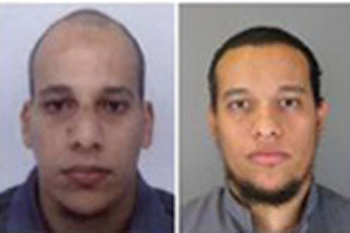
Said and Cherif Kouachi – Charlie Hebdo attack
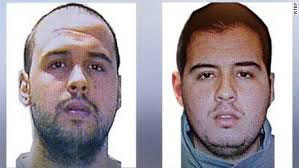

Khalid and Ibrahim Bakraoui, Saleh Abdeslam- Paris/Brussels attack

Said and Yousef Aallaa- Barcelona attacks
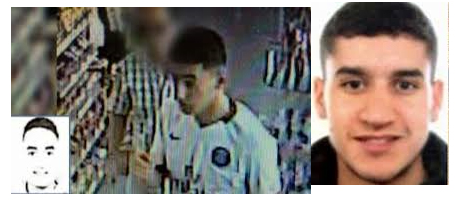
Hussain and Younes Abouyaaqoub- Barcelona Attacks


Omar and Mohammad Hychami- Barcelona attacks

Moussa and Driss Oukabir- Barcelona attacks

Iqbal and Riyaz Bhatkal, and Yasin Bhatkal- AQIS
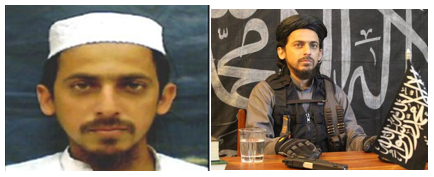
Sultan and Shafi Armar- ISIS South Asia
In these coordinated actions, online radicalisation, which is the current bugbear of the intelligence community, has a subsidiary role to the physical contact — be it through a mullah, or radicalisation in prison; an occurrence which is altogether too frequent, and has not been contained in Europe/US or India. It would be pertinent, at this juncture, to refer to the Indian tele preacher Dr. Zakir Naik, who has been active in cleverly couching his sermons to support Jihad.
Complaints had been received about his activities by the Indian Government, from not only local law enforcing agencies, but also from the Government of Bangladesh, after it was found that the perpetrators of the horrific Holey Artisan Café had been radicalised by him11, and the Government of Maldives after Bilad al Sham Media (BASM) run by Maldivians in Syria/Iraq, praised him for his inputs. Dr. Naik was closely affiliated to Pakistani preacher Anjem Choudhary, who is in England, and has now been incarcerated by UK authorities for supporting/encouraging terrorism. 12
Many of the perpetrators of the above acts had done their ‘pilgrimage’ to Syria/Iraq, or Afghanistan/Yemen. The attacks had been planned and directed by the ISIS intelligence wing (Emni aka Amn al Khariji), through its foreign espionage cell, which was led by the spokesperson Muhammad al Adnani, before his death, and operationalised by Abu Suleyman al Firansi (who was originally from France) along with his Moroccan-Belgian assistant Oussama Atar and Algerian virtual scenario plotter Rachid Qassim.13 It is interesting to note that Indian Mujahideen Subahani Haji Mohiuddin, from Kerala, in his interrogation after his return from Syria, stated that he had worked with Abdel Hameed Abdalooud (killed by Paris Police) and Abdelslam (currently in custody) who had been identified and trained by Firansi.
Europol has stated that around 15,000 jihadis have returned to Europe, and they are a cause of potential danger, for both importing terrorist activities and methods from war zones into Europe and acting as nodes to engender radicalisation.14 With the fall of Mosul, and eventually Raqqa, the subsequent shrinking of the ISIS’s space, is going to generate a re-migration of jihadis into the Af-Pak region, with security implications for India. Hence, Zakir Musa’s call in Kashmir for a movement beyond nationalism is a matter of disquiet. Musa’s group, currently dismissed by the Jammu & Kashmir authorities as being marginal, is likely to get heft from this development, and is further gaining traction with the unemployed youth.
The common thread for radicalisation, as happened in Barcelona, are the areas from where the jihadis get radicalised and operate. The Barcelona jihadis were all from Catalonia, which has an independence struggle against the central authority at Madrid. The jihadis came from a town called Rippon in Catalonia, which has a Muslim majority population, with rampant unemployment, much like Molenbeek in Belgium (from where the Paris/Brussels attackers hailed), which has been termed the ‘decaying heart of Europe’.
While we are given to patting ourselves on the back for containing ISIS in India, we cannot ignore the real dangers that still exist. Families have been our first line of defence against radicalisation, but the existence of family/friends-centric radicalised gangs is emerging as a reality. The jihadi environment is intensifying, and fractious areas, like south Kashmir need close circuit monitoring. In this context, the government needs to take a call on monitoring Qutbahs.
This suggestion would predictably draw gasps of horror, on the grounds that it is a hit on our secular fabric. To those, I would say that at present there is some value in adapting a more utilitarian/Benthamite approach in politics. This is what is being done in the United Arab Emirates, which monitors all Friday prayers, and has been able to successfully contain terror attacks. Internet penetration in India is growing exponentially. The threat of online radicalisation, coupled with extremist Qutbahs, is a noxious brew we can do without.
Our vulnerabilities are myriad. Processions for the Ganesha Visarjan have just been completed all over India, and were celebrated with special fervour in cities like Mumbai. For police forces like those in mega cities like Mumbai, hard pressed as they are, had to deal with high threat levels due to persistent extremist messaging and continue to be wary of the extremists adopting tactics such as those witnessed in Europe. Further, the city is expected to witness mega events like the performance by the Dream Theatre group of the US at the Mumbai Metropolitan Regional Development Authority (MMRDA), on October 8. Such events are bound to draw huge crowds, raising fears of an attack like the one perpetrated on Ariana Grande’s concert in Manchester (May22, 2017). A major attack would do far greater damage to the fabric of our society that regularising Friday sermons. Pro-active intervention would help prevent vulnerable individuals from getting further radicalised. It is time to bite the bullet on this issue.
Views expressed are of the author and do not necessarily reflect the views of the IDSA or of the Government of India.
- 1. https://www.facebook.com/ksltv/photos/a.75235833675.74625.36259238675/10...
- 2. https://ansaaar1.wordpress.com/2015/10/18/you-will-be-overcome-by-shaykh...
- 3. http://www.news.com.au/lifestyle/real-life/news-life/islamic-state-tells-lone-terrorists-to-target-people-on-quiet-walks-beaches-and-night-shifts/news-story/72914e71abdefcc63e0c80b8c92ab10b
- 4. Twitter feed from @rukminicallimachi, dated May 16 2017.Callimachi is a reporter from NYT, specialising on terrorism related issues.
- 5. http://www.news.com.au/world/son-of-bin-laden-rise-of-the-crown-prince-o...
- 6. http://timesofindia.indiatimes.com/india/hizbul-mujahideen-leader-zakir-...
- 7. Raising the Militant flag in Kashmir, by Animesh Roul/https://jamestown.org/product/militant-leadership-monitor-august-2017/?m...
- 8. http://www.wikiwand.com/en/Charlie_Hebdo_shooting
- 9. https://tifrib.com/muhammad-salih-al-munajjid/
- 10. http://www.telegraph.co.uk/news/worldnews/europe/france/11996120/Paris-a...
- 11. http://www.aljazeera.com/indepth/features/2017/05/india-arrest-preacher-...
- 12. Conversation with a Maldivian scholar who visited IDSA, June 2017.
- 13. https://www.counterextremism.com/extremists/abu-suleyman-al-firansi
- 14. https://www.europol.europa.eu/activities-services/main-reports/eu-terror...

.jpg)

